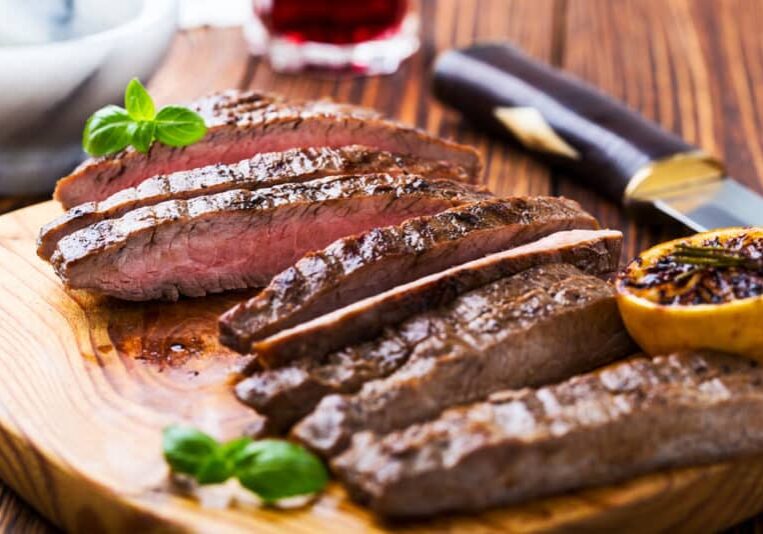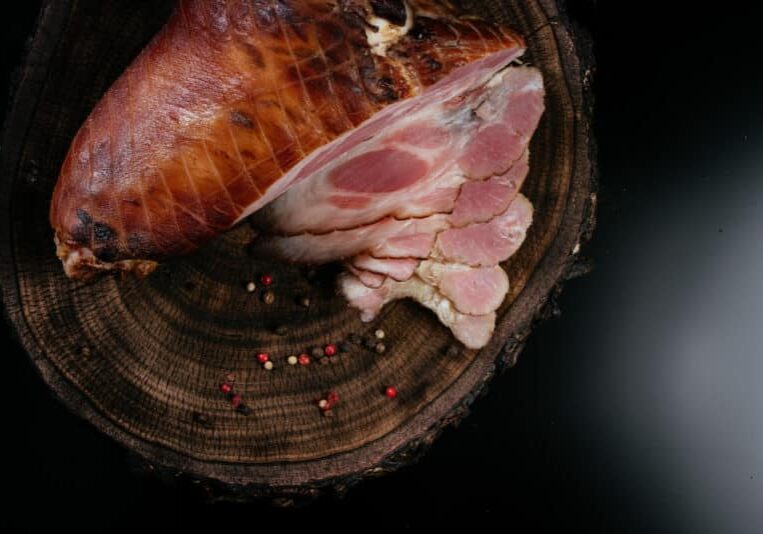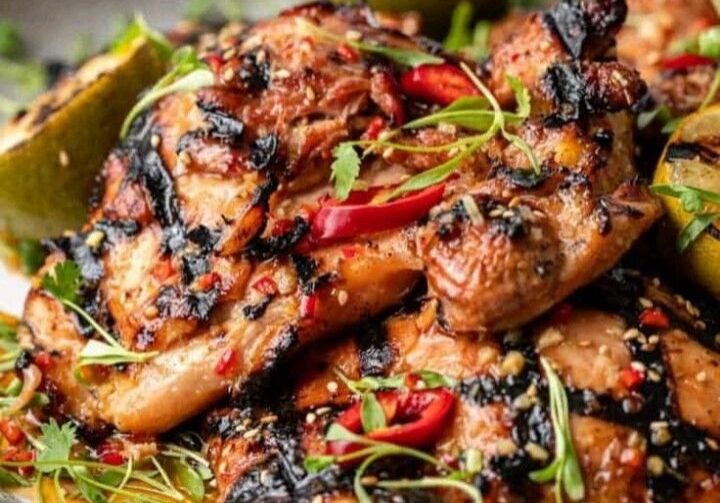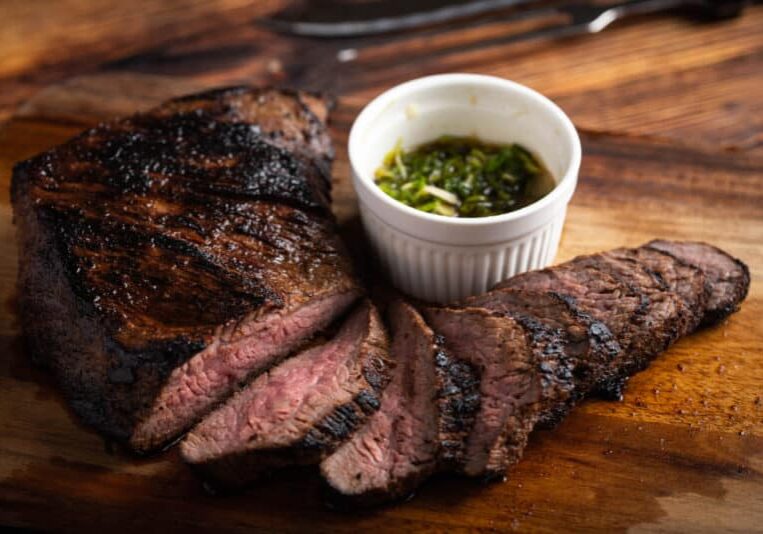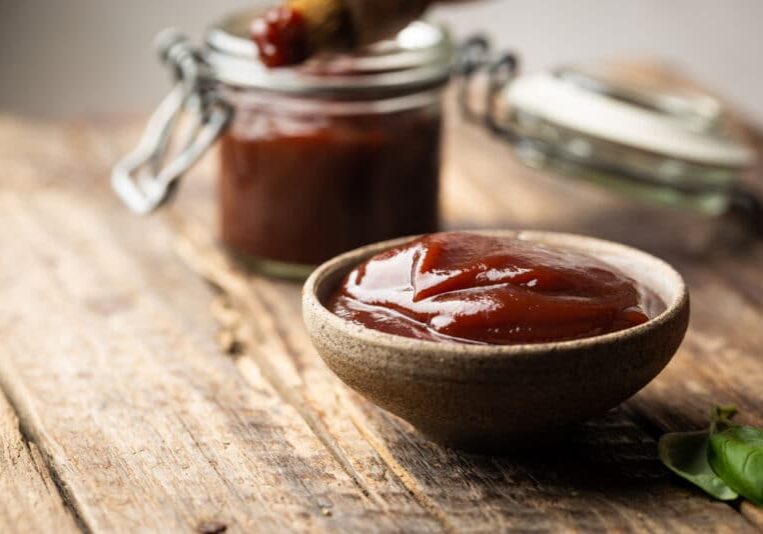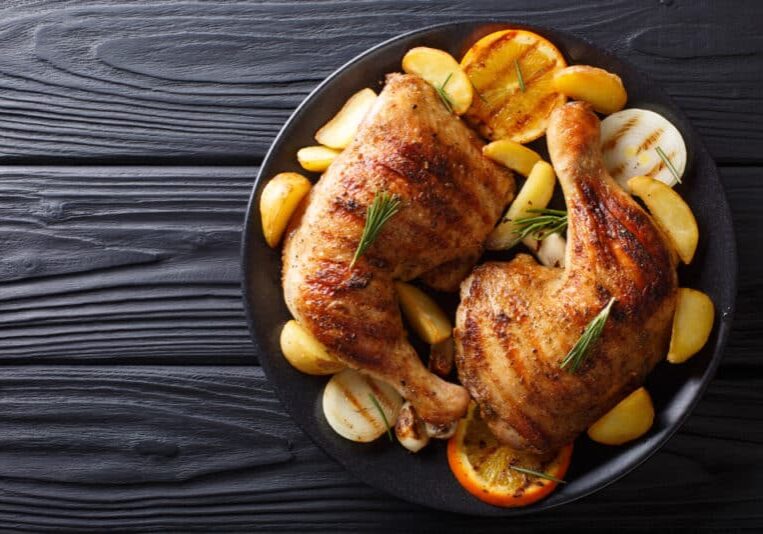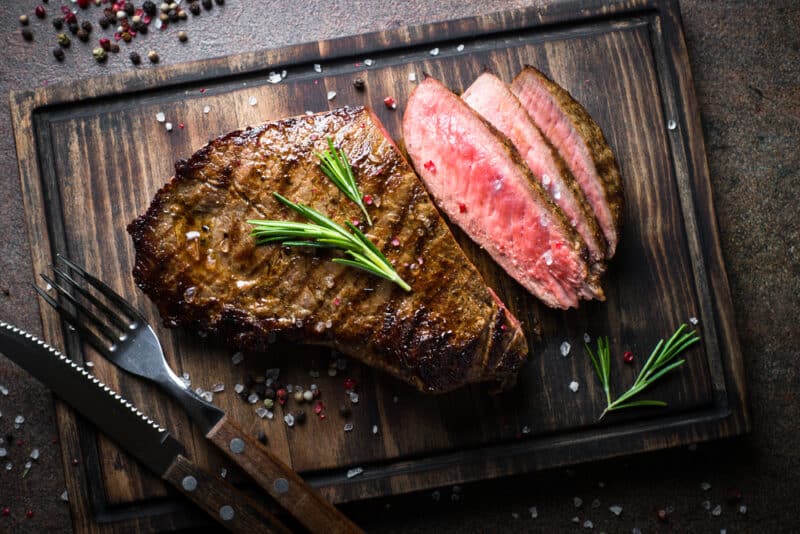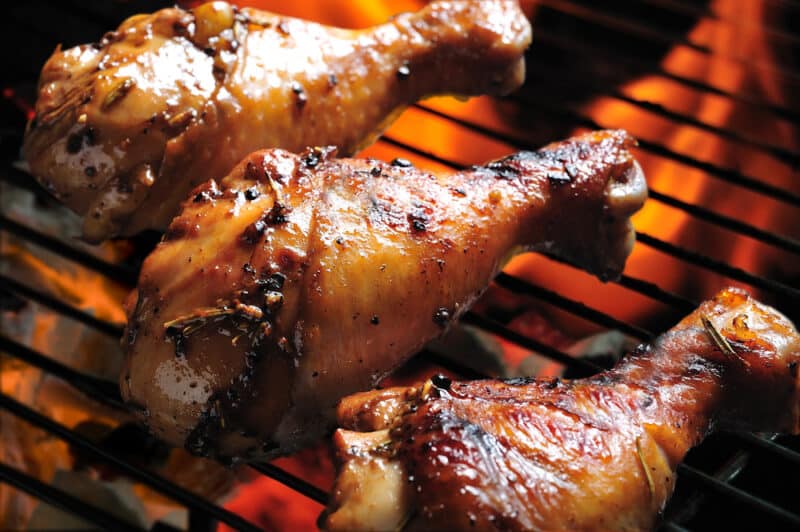How Long to Smoke a Brisket Per Pound
TheGrillingMaster.com is reader-supported. If you buy something using the links on our site, we might earn an affiliate commission at no added cost to you. This helps us pay our staff to keep making awesome content for you!
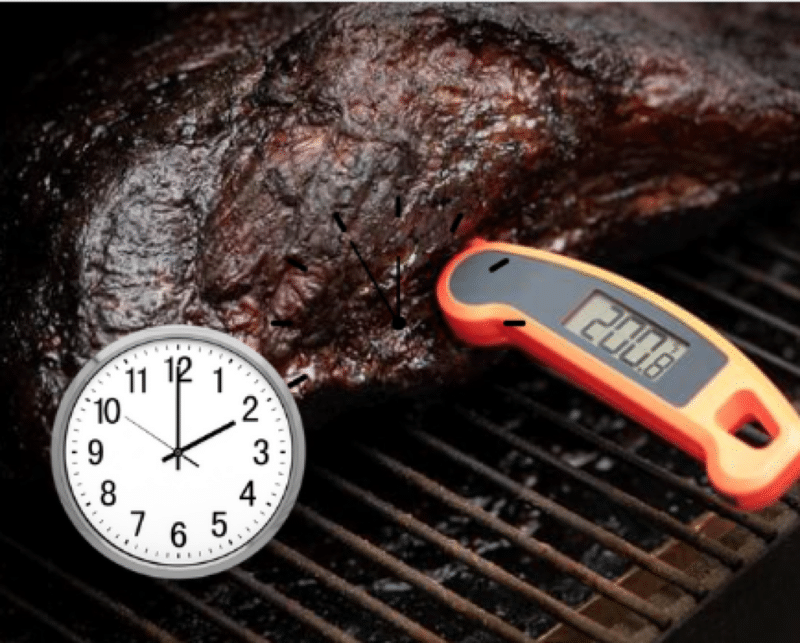
1.5 to 2 hours per pound is the general rule of thumb for how long to smoke a brisket at 225 °F, using the low-and-slow method. It is a time-consuming but rewarding process, and smoking a 16-pound brisket could take between 20 and 24 hours. To ensure that your brisket is cooked to perfection, it is important to monitor the internal temperature of the brisket.
In this article, we will explore all the factors that can influence cooking time, as well as provide tips on how to properly track the internal temperature of the brisket for the best results. With this information, you will be better prepared to create a delicious, tender, and juicy brisket.
Planning a Brisket Smoking Session
No two briskets are the same size, so there’s not much use in giving an exact guide for brisket smoking time. You need to work out the time based on the weight of each one. To make sure your brisket is tender, use the low and slow method at steady, low temperatures of 225- or 250 degrees Fahrenheit.
Preheat your pellet grill to 225 °F and leave it for fifteen minutes. To make sure your brisket turns out great, buy the best quality beef you can find, such as a whole-packer brisket or a full-packer brisket.
Acknowledging that some pit masters prefer higher ambient temperatures to reduce the smoking time, we will also include approximate time frames for 250-degree smoking, as well as hot-and-fast at 300 °F.
More reading: The best sides for brisket tacos.
Preparing the Brisket for Smoking
Smoking a packer is a whole lot more than popping the brisket in the smoker. Preparations like trimming and seasoning are important steps to ensure the end result provides a perfect brisket.
When it comes to your brisket, there are three key areas to understand:
- The brisket flat – this is the lean side of the brisket, with not as much marbling as the point. It’s thin and flat.
- The point – this piece of meat is the thickest part and the side is curved up and full of fat, which makes it extra juicy.
- The fat cap – the side of the brisket is completely covered in fat.
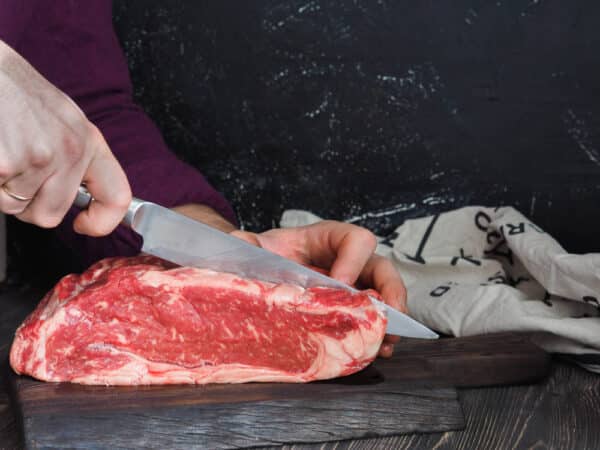
Trimming the Brisket
Cut off any excess fat and silver skin from the meaty side of the brisket. When you’re done with that, take the top and sides of the brisket and trim away the fat, but leave the fat cap for now.
Trimming the Fat Cap
Two ways of trimming the fat cap of brisket are out there, and what you do depends on where your heat source is coming from. Please keep in mind that managing the fat content is a key health benefit of smoking brisket.
If you use a pellet grill and the heat comes from below, you don’t trim the fat very much. Some folks may not agree, and that’s cool – everyone’s got their own way of doing things.
We believe in this method ’cause it keeps the brisket protected from the heat below, making it ultra-juicy and much less likely to dry out.
You can also leave a quarter inch of fat on the fat cap when trimming.
This is the way pit masters do it when they cook with the brisket fat side up. It’s a great way to go for those using an offset smoker since the fire is far away and the temperatures stay low.
Folks who do it this way will tell you that the fat will drip down over the brisket during cooking and baste it as it smokes.
TIP: It’s really hard to trim a room-temperature brisket because it’s so slippery and flexible. To make it easier, put the brisket in the freezer in its original packaging for 30 to 45 minutes. That way, the brisket will be firm enough to make trimming a breeze, even if you don’t have a super sharp knife.
Learn more about hot and fast brisket here.
Seasoning the Brisket
When it comes to seasoning a brisket before smoking it, the goal is to create a balance of tastes that bring out the natural flavors of the meat.
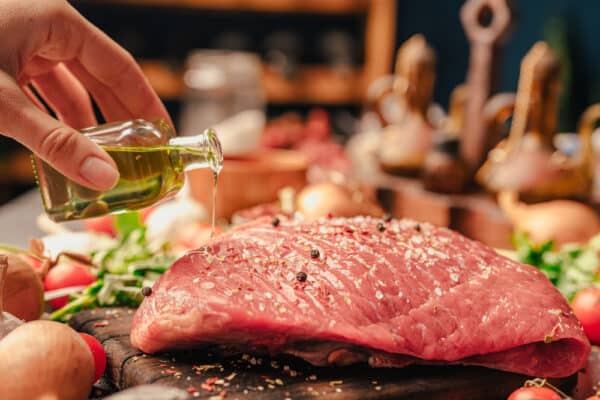
There is an endless list of smoked brisket recipes out there with different seasonings and methods, but if you want to go the traditional Texas-style route, just use some kosher salt and coarse black pepper. Take your time to make sure you get the spice rub onto every bit of exposed beef.
The key is to experiment with different seasonings to find the flavor profile that you like best!
Next Step, Mental Preparation
You’re halfway done! You’ve already trimmed the brisket, applied the seasoning rub, and figured out the temperature at which you want to cook it. Now, it’s time to get yourself ready for the hard part: the time it takes to smoke the brisket.

As mentioned, smoking a brisket can take roughly 1.5 to 2 hours per pound at an ambient smoker temperature of 225 °F, 1 to 1.5 hours per pound at 250 °F, and 30 to 45 minutes per pound at 300 °F.
Using those numbers as a guide will give you an idea of how many hours you should wait before you start checking the internal temp.
You should aim to get the internal temperature of the brisket at 195 °F, which will be the time to pull it off the smoker to rest.
However, when the internal temp gets to between 150 and 170 °F, the stall happens, which is when you should wrap the brisket in aluminum foil or butcher’s paper.
For Example:
If you are smoking an 8-lb brisket at 225 °F, the total time in the smoker will be approximately 12 hours.
By the 10-hour mark, you can check the internal temperature. When it reaches 150 to 170 °F, the brisket should be wrapped in aluminum foil or butcher’s paper and returned to the smoker for another 2 hours.
By that time, the internal temp should be around 195 °F, and ready to be removed from the smoker for the 2-hour resting stage.
While the smoked brisket rests, the carry-over cooking will cause the temperature to rise to about 205 to 210 °F, which is the ideal temperature for deliciously flavorful and tender smoked brisket.
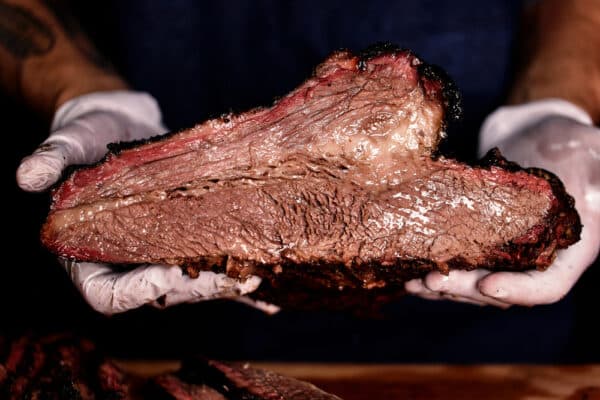
How Long to Smoke Brisket At 225°F
For the best results, cook the brisket at a temperature between 225 and 250 °F. This will give it a great bark and flavor and make sure it’s cooked through.
Don’t expect that shorter cooking times mean lower temperatures – you’ll need to smoke it uncovered for the number of hours required for the size of your brisket, then wrap it in butcher paper or foil and cook for a couple more.
The longer you smoke it, the more tender the meat will be.
How Do You Know When the Brisket is Done?
The easiest way to determine when the brisket is done is by measuring its internal temperature.
195 °F is an ideal internal temperature because it will continue to rise during the resting period to reach 205 to 210 °F.
At 225 °F, smoking a brisket takes about 1.5 to two hours per pound, at 250 °F, it takes 1 to 1.5 hours per pound, and at 300 °F, it takes 30 to 45 minutes per pound.
Below is a table showing approximate hours for smoking brisket from 1 pound to 16 pounds, at ambient temperatures of 225, 250, and 300 °F.
Approximate Time Table
|
Brisket Weight in Pounds |
Ambient Temp of Smoker 225 °F |
Ambient Temp of Smoker 250 °F |
Ambient Temp of Smoker 300 °F |
|
1 |
1.5 Hours |
1 Hour |
.5 Hours |
|
2 |
3 Hours |
2 Hours |
1 Hour |
|
3 |
4.5 Hours |
3 Hours |
1.5 Hours |
|
4 |
6 Hours |
4 Hours |
2 Hours |
|
5 |
7.5 Hours |
5 Hours |
2.5 Hours |
|
6 |
9 Hours |
6 Hours |
3 Hours |
|
7 |
10.5 Hours |
7 Hours |
3.5 Hours |
|
8 |
12 Hours |
8 Hours |
4 Hours |
|
9 |
13.5 Hours |
9 Hours |
4.5 Hours |
|
10 |
15 Hours |
10 Hours |
5 Hours |
|
11 |
16.5 Hours |
11 Hours |
5.5 Hours |
|
12 |
18 Hours |
12 Hours |
6 Hours |
|
13 |
19.5 Hours |
13 Hours |
6.5 Hours |
|
14 |
21 Hours |
14 Hours |
7 Hours |
|
15 |
22.5 Hours |
15 Hours |
7.5 Hours |
|
16 |
24 Hours |
16 Hours |
8 Hours |
The table above indicates approximate times per pound, which is the number of hours before you should check the internal temperature of the brisket to determine whether it is done.
However, when planning to smoke a brisket, you should also include the time expected to be spent on preparation, resting, etc.
This is a guide to the entire time to bargain for when planning to smoke a brisket.
|
Preparation Stage |
Approximate time required |
|
Trimming the brisket |
30 minutes to 1 hour |
|
Seasoning |
30 minutes |
|
Marinating (If you choose to do it) |
8 Hours |
|
Cooking Stage |
Approximate time required |
|
Smoking until the internal temp is 150 to 170 °F |
?? As per brisket weight. |
|
Wrapping and further smoking |
2 Hours |
|
Testing and resting |
1 to 2 hours |
Other Factors to Consider
It’s not just the heat you need to think about when smoking meat. Other aspects to consider include:
- The size and weight of the cut of meat make a difference in this cooking method too, which is why you’re looking into how long it’ll take to smoke brisket by the pound. It’ll take longer to smoke a whole brisket than just a flat cut.
- Other factors that can influence the hours of smoking a pound of meat are the thickness, and how much fat it has. A higher-grade brisket with more fat and marbling and less connective tissue will usually cook faster than a lower-grade one.
- Removing the cut of beef from the fridge beforehand and allowing it to warm up to room temperature can help cut the cooking time.
- Depending on the way you’re cooking and the smoker you’re using, the cooking time per pound may vary. You’ll need to experiment with your smoker to get a feel for how it works.
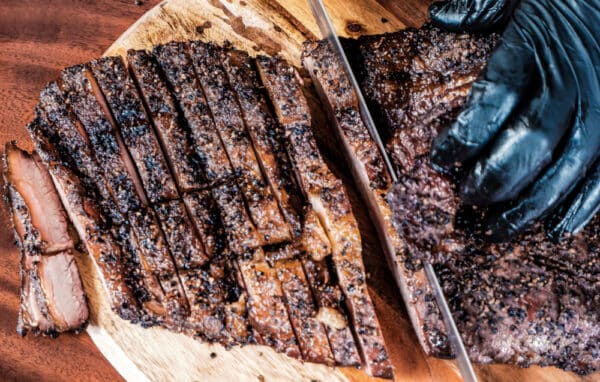
Smokers and Weather
- No two smokers are the same. Even if they’re the same make and model or type of smoker, each has its own unique characteristics. So, your smoker may or may not hold the right temperature. You’ll be the best judge of how your smoker behaves, so you’ll need to adjust the cooking time accordingly.
- If you just got a new smoker ad it’s the first time, or you’re still getting the hang of it, it’s a good idea to try it out with a smaller cut of brisket. That way, you can get an idea of how long it’ll take.
- Electric and gas smokers have consistent heat, making it simpler to work out how long it’ll take to cook a certain amount of food compared to pit or barrel smokers. Keeping the lid on traps the heat in, so less time is necessary.
- The weather (including temperature, wind, and humidity) can play a role in the amount of time it takes to smoke brisket per pound. On a cold, windy night, it can take more than two hours per pound to cook a brisket.
Note: You should also spray your brisket for better flavor.
Frequently Asked Questions
Q: How long does it take to smoke a brisket per pound?
A: It generally takes about 1.5 to 2 hours per pound of brisket at a cooking temperature of 225-250°F to smoke a brisket until it reaches an internal temperature of 195-203°F.
Q: Can I smoke a brisket for too long?
A: Yes, it is possible to overcook a brisket. Overcooking can result in a dry and tough brisket. It’s important to monitor the internal temperature of the meat and remove it from the smoker when it reaches the desired temperature.
Q: How do I know when my brisket is done?
A: The best way to determine the doneness of smoked beef brisket is by checking its internal temperature with a meat thermometer. When the internal temperature reaches between 195-203°F, the brisket should be tender and juicy. You can also use the “probe test” by inserting a probe or toothpick into the brisket and if it slides in and out easily, it’s done.
Q: Should I wrap the brisket in foil while smoking?
A: Wrapping the brisket in foil, also known as the “Texas Crutch,” can help speed up the cooking process and keep the meat moist. However, it can also result in a softer bark on the brisket. It’s a matter of personal preference whether to wrap or not.
Q: Should I rest my brisket before slicing?
A: Yes, it’s recommended to let the brisket rest for at least 30 minutes after removing it from the smoker. This allows the juices to redistribute throughout the meat, resulting in a juicier and more tender brisket.
Q: What wood should I use to smoke a brisket?
A: Hickory and oak are popular choices for smoking brisket, but other woods such as mesquite, pecan, and fruit woods like apple or cherry can also be used. It’s a matter of personal preference and the flavor profile you want to achieve.
Learn More About Grilling
If you want to learn more about grilling, check out these other helpful resources!

Kevin Turner
Hi there, I'm Kevin Turner, Founder and CEO of thegrillingmaster.com. I started this website to share my passion and knowledge with you. You can leverage my years of experience as a pit master and professional to grill great food!
About The Grilling Master
Hi there, I'm Kevin Turner, Founder and CEO of thegrillingmaster.com.
My passion has always been grilling, smoking and BBQ delicious meats that satisfy my inner carnivore!
I started this website to share my passion and knowledge with you, the hungry reader who wants to prepare the perfect meal.
You can leverage my years of experience as a pit master and professional.
Send me a message and let's connect on Twitter here.


